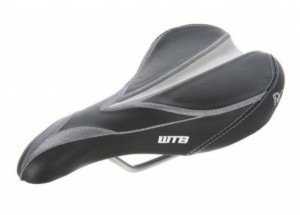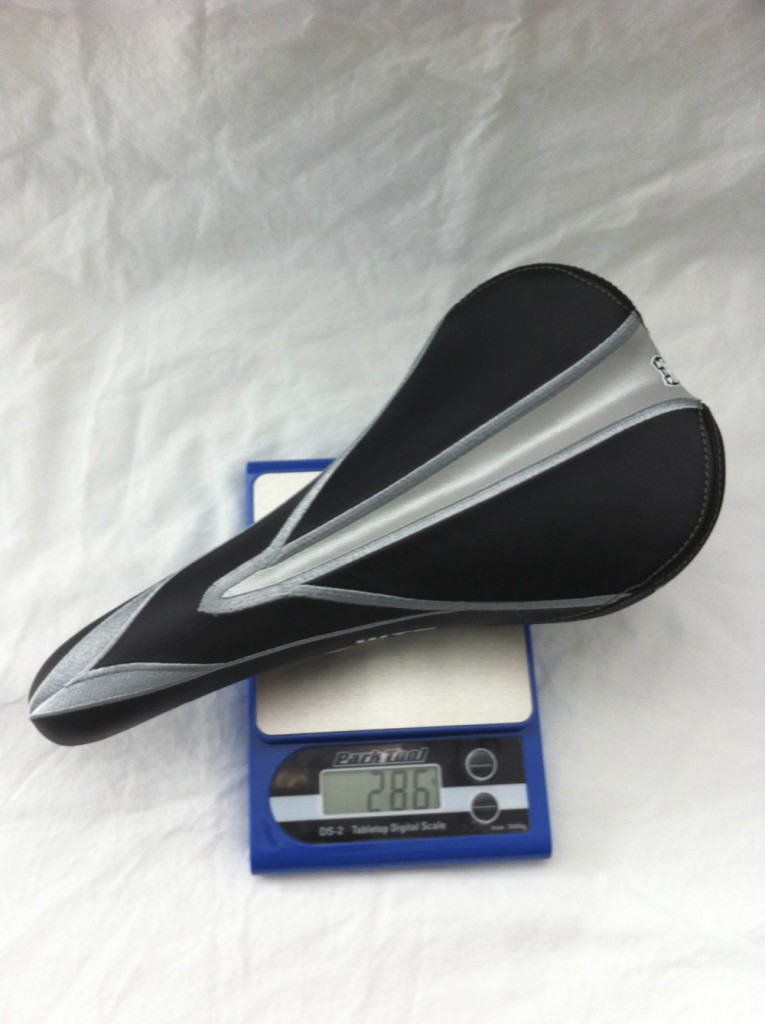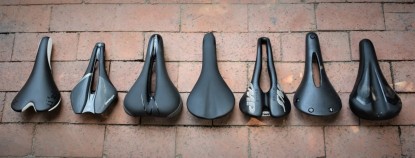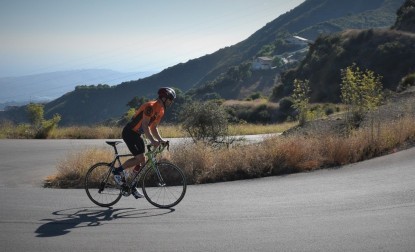WTB has informed us that their WTB Rocket saddle (previously known as the Rocket V) has received an update. The new version, pictured above, is available in different sizes and levels, with several varying features (and prices!). Read on to find out more!
WTB Rocket Review
Our Verdict
WTB has informed us that their WTB Rocket saddle (previously known as the Rocket V) has received an update. The new version, pictured above, is available in different sizes and levels, with several varying features (and prices!). Read on to find out more!
Our Analysis and Test Results
The New Rocket vs. The Older Rocket V
The WTB Rocket has replaced the older Rocket V in the WTB line-up of saddles. This new version is available in five different levels (Carbon, Team, Pro, Race, Comp), which employ varied rail materials, with varying weights as well. The Rocket saddles range in price from $40 to $250. WTB has also informed us that certain levels of the Rocket are now available in various widths, including 142mm and 150mm. Lastly, the cover material of the four most expensive levels is now a microfiber material that they claim is smoother and performs better in wet conditions. The version most similar to the model we reviewed is the Comp level of the Rocket, which maintained steel rails and the same synthetic cover.
Check out a side-by-side comparison, with the Comp version of the latest Rocket saddle on the left and the older Rocket V version shown on the right.Here's a summary of the key differences between the new 2016 version and the older Spot:
- Five Different Levels — The new Rocket is now available in Carbon, Team, Pro, Race, and Comp levels. These different levels use different rail materials; carbon, titanium, chromoly, and steel, respectively.
- Various Widths — Some levels of the Rocket now come in widths varying from 130mm to 142mm to 150mm.
- New Cover Material — The Carbon, Team, Pro, and Race levels of this saddle have a microfiber material, which is intended to be smoother and perform well in wet conditions.
- Weight — The weights of these saddles vary, as they use different rail and cover materials. The weight of the steel-railed saddle is now 310g, as opposed to its predecessor's weight of 286g.
While we have not tested this updated version, we sorted through user reviews and it appears to be of comparable quality to the version that we tested. The assessments and analysis below continue to reflect the Rocket V model until we complete a full review of the newest Rocket.
Hands-On Review of the older Rocket V
Comfort
We did not give the Rocket high marks for comfort. At 132mm in width the majority of our testers found it to be too narrow. The padding is much firmer than what you will find on our Best Buy Award winner WTB Speed. The Rocket does have an anatomical relief channel, and a Comfort Zone cut out on the nose. We were unable to discern any difference in pressure when sitting over the cutout. The shape is similar to the Speed V but has a more pronounced rise in the rear and a shorter overall length. If you have very narrow sit bones this saddle may be worth a try.
Performance
The Rocket received higher ratings for performance than the other WTB saddles in our review, other than the high scoring High Tail Pro, primarily due to firmer padding and a stiffer shell. Power transfer feels adequate, but not on par with our Editors' Choice winner, the Specialized Phenom. With a length of 262mm, the Rocket V is one of the shortest saddles in our test group, and it does not give the rider much room to move around.
Versatility
The Rocket is versatile, and will work well for mountain, road, or cyclocross use. If you can deal with the narrow width it does offer good power transfer. It is shaped a bit to aggressively for use on a town bike or cruiser.
Durability
The Rocket is a very durable saddle. The synthetic cover and heavy-duty fabric on the corners can take some abuse. It does have a good deal of exposed stitching that can be prone to abrasion, but we had no problems during testing. The steel rails round out the package; it's a saddle likely to last you a long time.
Weight
Best Application
The Rocket is well suited to use on a mountain bike or road bike. We recommend it to smaller riders with narrow sit bones. The shape is suited to those who do like to stay put and not move around much. The nose is short and is not ideal for a rider who spends a lot of time in the drops on the road bike. For the racer on a budget this could be a good buy if it fits your riding style and body type.
Value
With an MSRP of $60, the Rocket is not quite the bargain of our Best Buy WTB Speed. However, it is still a good buy for a firm supportive saddle that could be used for racing.







